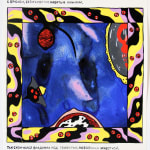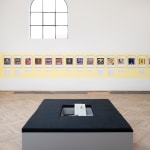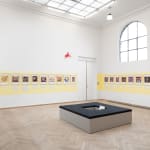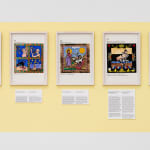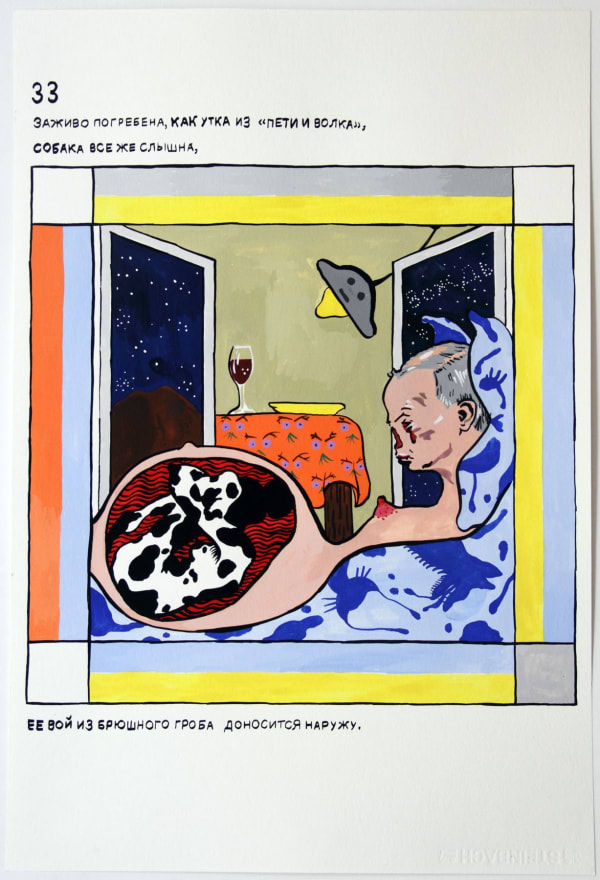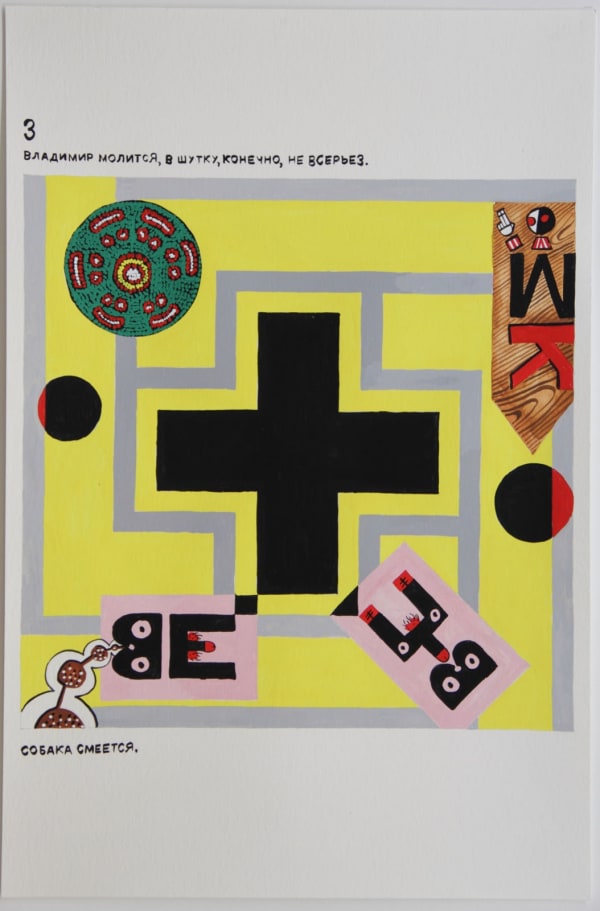
Roee Rosen, Vladimir’s Night, 2012. Gouache on paper, 63 x 45 cm. Installation view, The Mosquito-Mouse and Other Hybrids, Kunsthal Charlottenborg. Photo by David Stjernholm. Courtesy Roee Rosen and Rosenfeld Gallery.

Roee Rosen, Vladimir’s Night, 2012. Gouache on paper, 63 x 45 cm. Installation view, The Mosquito-Mouse and Other Hybrids, Kunsthal Charlottenborg. Photo by David Stjernholm. Courtesy Roee Rosen and Rosenfeld Gallery.

Roee Rosen, Vladimir’s Night, 2012. Gouache on paper, 63 x 45 cm. Installation view, The Mosquito-Mouse and Other Hybrids, Kunsthal Charlottenborg. Photo by David Stjernholm. Courtesy Roee Rosen and Rosenfeld Gallery.
Roee Rosen
Plate 34 - Like the tragic wolf of bloody riding hood,
His abdomen cruelly crammed with stones,
Thus expired Vladimir, weighed down by his animal lover,
His luscious deputy, his deathly artificial daughter.
Further images
Maxim Komar-Myshkin was the pseudonym of the fictive Russian poet Efim Poplavsky (1978-2011), who immigrated to Tel Aviv in the early 2000’s. There, he founded the Buried Alive Group, a collective of ex-Soviet artists, writers and film makers who disavowed the culture around them and seeked a zombie-like artistic existence. Suffering from acute paranoia, Komar-Myshkin believed that Putin had a personal vendetta against him, and that his assassination was pertinent. The album Vladimir’s Night, his artistic revenge against Putin, was created in secrecy and discovered after the artist committed suicide. Disclosing, perhaps, its author’s conspiratorial perception, the album hides a plethora of wide-ranging references, from the financial schemes of post-Soviet Russia and Putin’s political life, to Russian medieval literature and early Soviet advertisements. In the book Maxim Komar-Myshkin’s Vladimir’s Night (Sternberg Press, 2014) this matrix is pursued by the (fictive) literary scholar Rosa Chabanova, who also suggests her own, dramatically different interpretation of the events leading to the artist’s premature death.
ERNA HECEY
For additional information, please contact office@ernahecey.com
This website uses cookies
This site uses cookies to help make it more useful to you. Please contact us to find out more about our Cookie Policy.
Join our mailing list
* denotes required fields
We will process the personal data you have supplied to communicate with you in accordance with our Privacy Policy. You can unsubscribe or change your preferences at any time by clicking the link in our emails.

